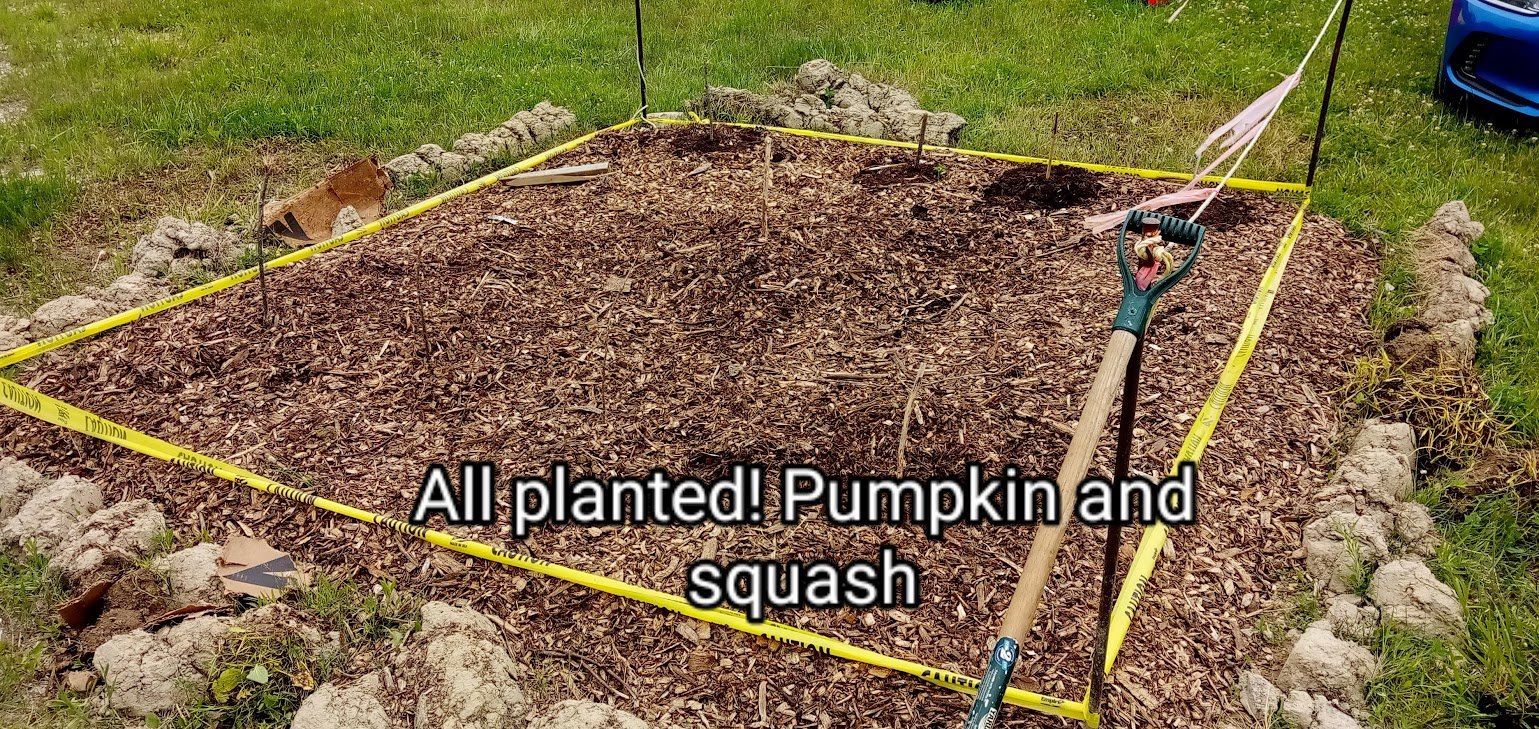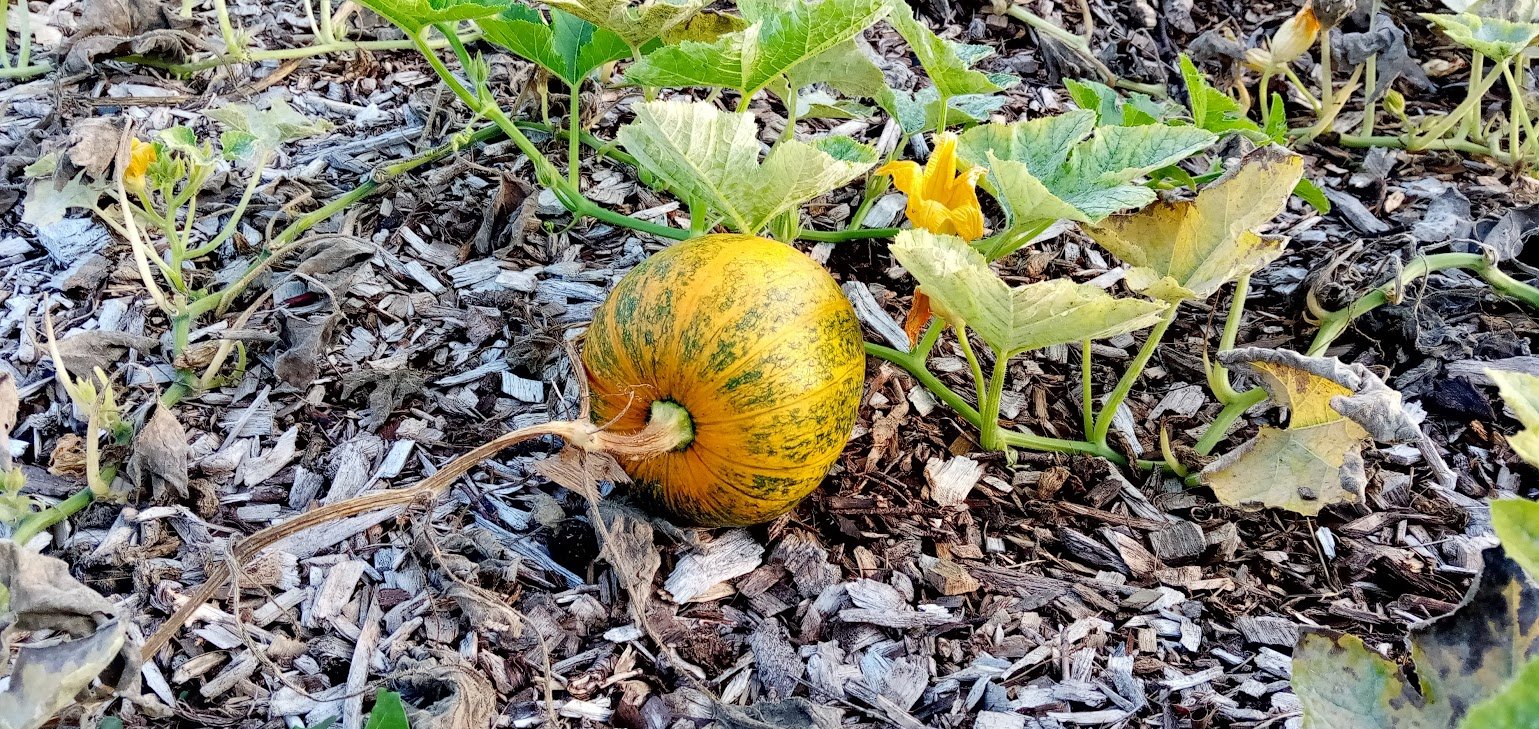Marydale Park’s Mini Garden Passes the Test
If you’ve been up to Marydale Park this summer you may have seen a little 10 by 10 garden patch beside the maintenance garage. It has yellow Caution Tape around it. The reason is … PUMPKINS!
Our little garden patch survived through the dry summer, especially August, with only a couple of bucket waterings. The secret to the garden’s survival was the thick layer of wood chips on top which protected the soil from overheating and which stored rainwater and dewdrops. The wood chips also formed a tiny ecosystem on the soil surface which allowed microbial life and tiny, tiny insects to thrive. These in turn help the plants get nutrients (and they attract birds too).
The photos below show the steps our test garden went through in its first year:
Step 1: Turn up the sod around the edge to create a weed gap (optional)
Step 2: Cover the grass with cardboard, overlapping a few inches.
Step 3: Cover the cardboard with 6 inches of wood chips.
Step 4: Push wood chips aside and drop in a bit of compost. Plant pumpkin seeds.
Step 5: The pumpkins are flowering. This is a month later (end of July). The bees were happy.
Step 6: End of August. We have a little pumpkin! The bees did their work. It’s a matter of waiting and watering if necessary. However, the main goal of this test is to see what can happen with a minimum amount of work, so this garden was only watered twice during August with just a couple of 5 gallon buckets of water.
This little video clip shows the ripening pumpkins in place.
As the pumpkin ripens in place, the vine dries up gradually. When the vine is shriveled up it’s time to harvest!
Unfortunately the squash didn’t make it.
Step 7: Mid-September - here is our harvest! Two little pumpkins. We hope to use the seeds for next year’s garden. The presence of a learning garden at Marydale Park is a great opportunity to show children (and grown-ups) how simple it is to produce food locally, and to take the soil to “higher ground” where there’s enough food to share it with others.
Step 8: Getting ready for winter. Some more compost and soil was added to make two rows and a central area. Rye grass seed was planted. It will sprout in the fall and then go dormant over the winter. It will help cover the soil and protect it from blowing away. in the spring the rye grass will put down deep roots and help break up the soil and send nutrients deep down to feed next year’s plants.
What fun!!
If you are interested in volunteering to help with next year’s garden, email Glen at glen.brown@cyo.on.ca







